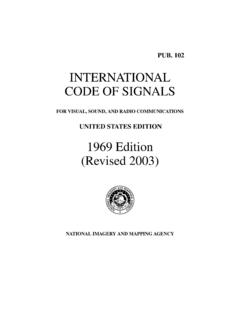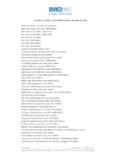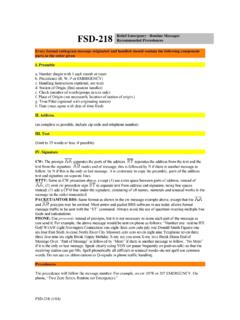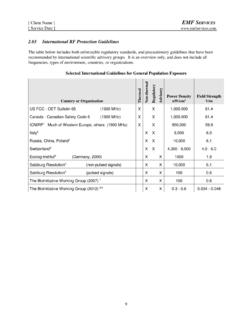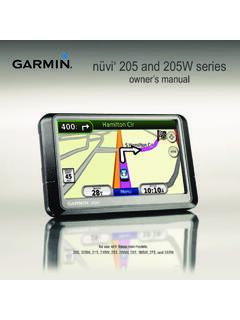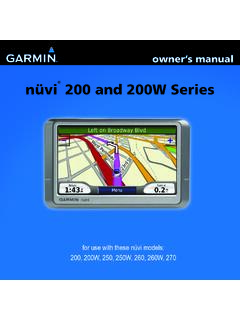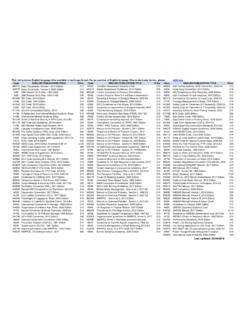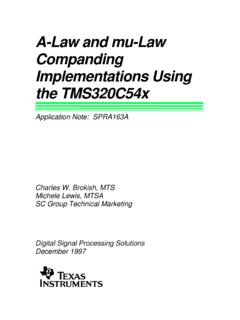Transcription of logbook - chartsandtides.co.uk
1 Log book contains an abridged summary of some of the signals, marks and infor-mation that can assist in navigation and avoidance of dangerous situations. Life Saving Signals to be used by Ships, Aircraft or Persons in Distress Shipping Forecast VHF Channels - Distress, Safety and Calling Channels DISTRESS TRANSMITTING PROCEDURES Collision Regulations Navigation Lights and Day Marks International Code Flags and Buoyage System Log book Weather Forecast Log Passage Planning Notes3 Sea AreaWindWeatherVisibilityVIKINGNORTH UTSIRESOUTH UTSIREFORTIESCROMARTYFORTHTYNEDOGGERFISH ERGERMAN BIGHTHUMBERTHAMESDOVER WIGHTPORTLANDPLYMOUTHBISCAYTRAFALGARFITZ ROYSOLELUNDYFASTNETIRISH SEASHANNONROCKALLMALINHEBRIDESBAILEYFAIR ISLEFAEROESSE ICELANDCOASTAL STATION REPORTSWindWeatherVisibilityPressureChan geWeather bulletins for shipping are broadcast daily on
2 BBC Radio 4at the following times: 0048 and 0535 (long wave and FM), 1200 and1755 (normally long wave only). The bulletins consist of a galewarning summary, general synopsis, sea-area forecasts and coastalstation reports. In addition, gale warnings are broadcast at the firstavailable programme break after < 1 km (< 1100 yd)POOR 1 to km (1100 yd to 2 NM)MODERATE 4 to 9 km (2 to 5 NM)GOOD >= 10 km (> 5 NM)Movement of pressure centresSlowly up to 15 knotsSteadily 15-25 knotsRather quickly 25-35 knotsRapidly 35-45 knotsVery rapidly over 45 knotsGale warningImminent Up to 6 hoursSoon 6 12 hoursLater 18 24 hrsPressure Change less mbar in 3 hoursRising/Falling Slowly Change to in past 3 hoursRising/Falling Change to in past 3 hoursRising/Falling QuicklyChange to in past 3 hoursRising/Falling Very Rapidly Change more mbar in 3 hoursShipping Forecast issued at.
3 There are additional forecast sheets at the rear of this book4 Illustrations ofLife SavingSignals requiredby V/29 ofSOLAS56 Calling ChannelsChannel 16 ( MHz) is the international distress, safety and calling radiotelephonychannel. Where it is necessary to call a station on Channel 16, other than in cases of distress,urgency or safety, both stations should switch to an alternative channel as soon as calls on Channel 16 should be kept brief and should not exceed one minute, when notconcerning distress, urgency or safety. For a call between ship stations an inter-ship channelshould be used, such as Channels 6, 8, 72 or 77.
4 For a call to a coast station the station sassigned channel should be used. Vessels equipped with Channel 70, where practicable shouldmaintain a continuous listening watch on Channel 16 until 1 February 70 ( MHz) - Digital Selective - Calling the Global Maritime Distress andSafety System (GMDSS) became fully operational on 01 February 1999 and Channel 70 is nowthe primary channel for Distress, Urgency and Safety alerting using Digital Selective Calling(DSC). It may also be used for initiating routine calls using DSC. It must not be used for information about the GMDSS is available from the Maritime and Coastguard 13 ( MHz) This channel is used for bridge to bridge voice communicationsunder GMDSS.
5 It will normally be monitored by commercial vessels if a danger of collisionexists. This channel is one of the few, under GMDSS that can be used without a preceedingDSC alert on Channel 10 ( MHz), Channel 67 ( MHz), Channel 73 ( MHz)and Channel 6 ( MHz) These channels have been set aside internationally for use inco-ordinated search and rescue operations. In the UK, their use is co-ordinated with HMCoastguard, as 10 In addition to its use in SAR operations, this channel is used during oil spill andother pollution incidents. From 1999 it is also used for the broadcast of Marine SafetyInformation in the UK 67 This is also used primarily for SAR operations and for safety communications withHM 73 This channel is used primarily for SAR operations and from 1999 the broadcast ofMarine Safety Information in the 6 Under GMDSS this channel is used for communications between ships and aircraftfor co-ordinating search and rescue designated channel usageInter-ship channels are for communications between ship stations.
6 Ideally, inter-shipcommunications should be restricted to Channels 6, 8, 72 and 77. Channels 10, 67 and 73should be avoided within VHF range of coastal areas in Europe and Operations and Ship Movement Certain channels have been set aside, byinternational agreement, for use in the Port Operations and Ship Movement services. Theseare assigned to a user, such as a port or oil terminal where the safe movement of ships isimportant. The channels assigned to particular users are published in the Admiralty List ofRadio Signals. It is important not to use these channels for other purposes if they have beenassigned locally or if they have not been set aside for inter-ship correspondence These channels have been set aside, by international agreement, formaking calls to the public telephone network.
7 Calls made on these channels are often referredto as link calls .Marina channels These channels have been set aside by the United Kingdom administration,for matters relating to mooring, berthing and race control. There are three marina M ( ) and M2 ( ) Channels M and M2 are UK channelsand should only be used in UK territorial waters. Their on-board use is covered by a ShipRadio Licence. However, equipment that is only capable of operating on these frequencies isusually licensed under a Coastal Station Radio Licence and it is not necessary for the operatorto hold an operator s 80 Channel 80 is an international maritime channel.
8 Its use must be under and inaccordance with the terms of a valid Ship Radio - Maritime Safety Informationwill be broadcast by co-ordination centres either on VHF Channels 10, 23, 73, 84 or 86, andexceptionally channel 67, following an initial announcement on Channel initial announcement will indicate the working channel the mariner should return A Local Inshore Forecast - (within 12 miles of the coast);Strong Wind Warnings when appropriate - (force 6 and above for the coastal watersout to 5 miles offshore); Gale (Storm) Warnings; WZ Navigational Warnings including Nega-tive Tide Surge Warnings.
9 GUNFACTS/SUBFACTS from selected stations B Area forecasts will be broadcast twice daily starting at the times shown in the righthand column GMTC entreA every 4 hrsB twice dailySwansea00050805 Thames00100810 Clyde00200820 Yarmouth00400840 Solent00400840 Brixham00500850 Dover01050905 Shetland01050905 Stornoway01100910 CentreA every 4 hrsB twice dailyFalmouth01400940 Forth02051005 Liverpool02101010 Portland02201020 Holyhead02350635 Belfast03050705 Aberdeen03200720 Milford Haven03350735 Humber03400740 Source - Radiocommunications Agency RA264- TRANSMITTING PROCEDURES(For use only when in grave and imminent danger and IMMEDIATEASSISTANCE is required)1.
10 Ensure transmitter is switched on and set to VHF Channel Then say:MAYDAY MAYDAY MAYDAYTHIS (Ship s name or callsign 3 times)MAYDAY followed by ship s name or OF PERSONS ON BOARD and ANY Listen for a reply and if none heard repeat above : MAYDAY, MAYDAY, MAYDAY,This is NONSUCH, NONSUCH, NONSUCH,MAYDAY, NONSUCH, Position 54 25 North 016 33 West,My boat is on fire and sinking, I require immediate assistance,4 persons on board, are taking a lifeboat, OVER. RECEPTION OF DISTRESS, URGENCY AND SAFETY MESSAGESAny message prefixed by one of the following pro-wordsconcerns Safety.
